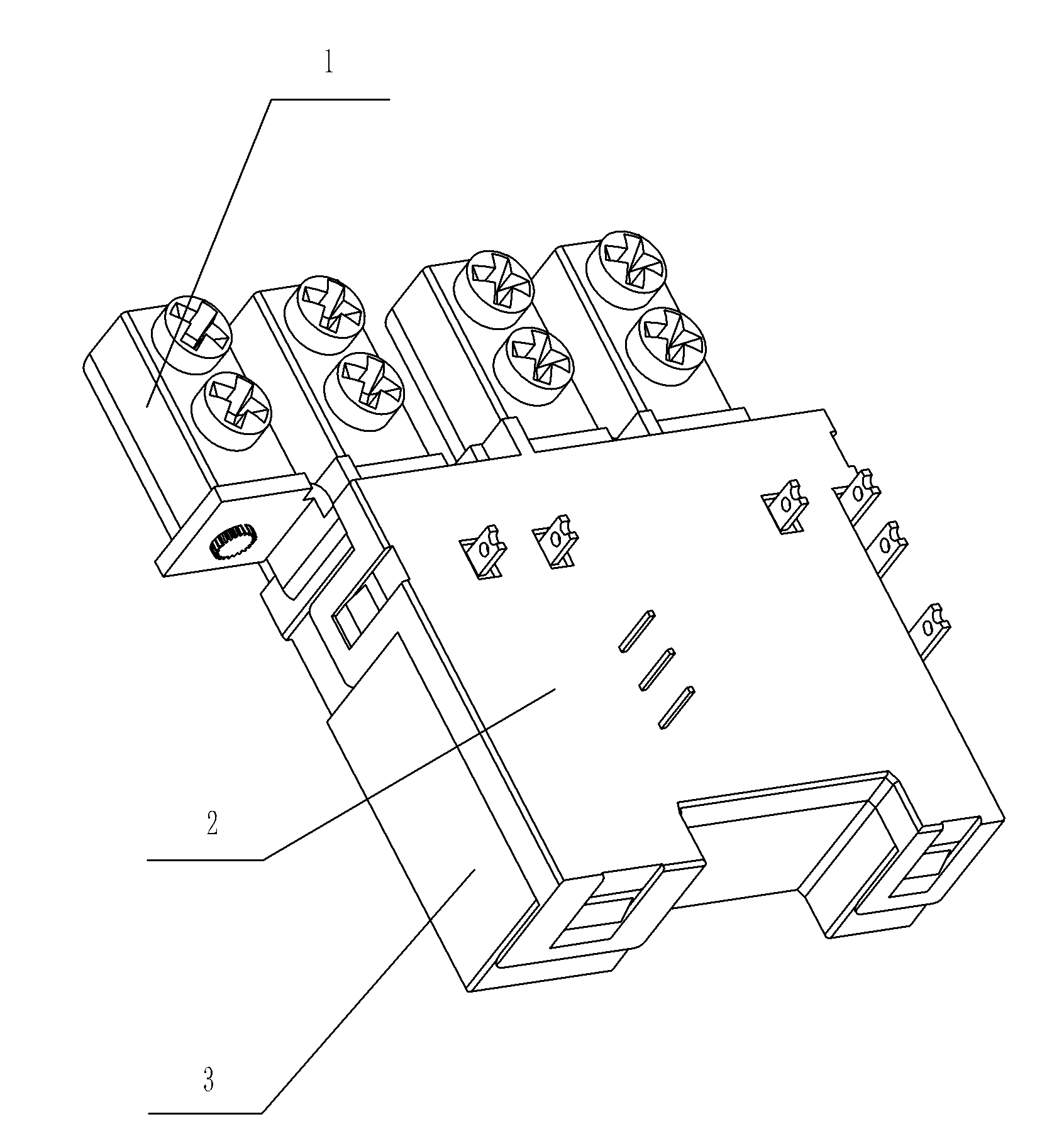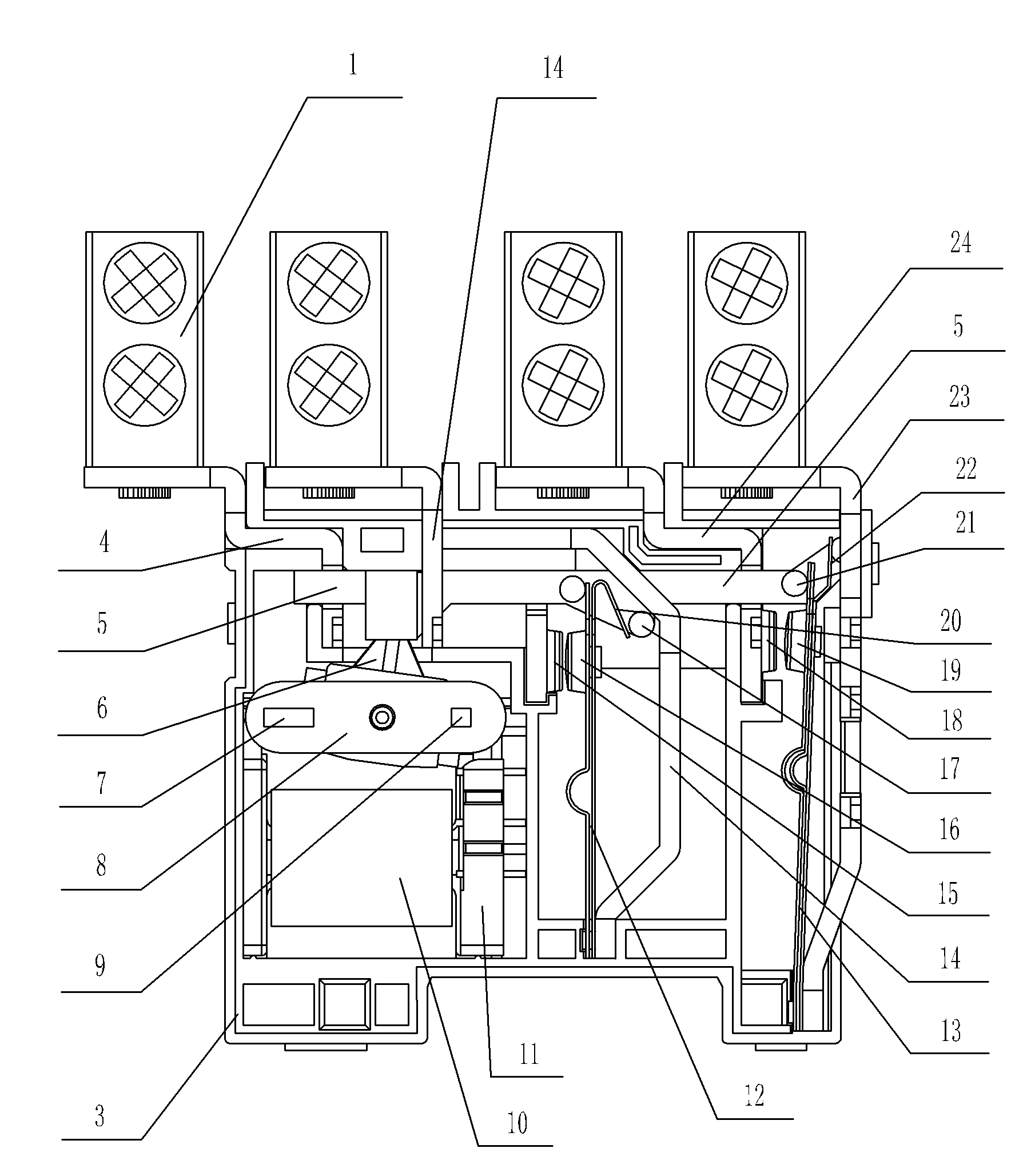Relay
A technology of relays and moving reeds, applied in the field of electronic control devices, can solve the problems of affecting the service life of coils, wasting electric energy, and increasing the heat generated by coils
- Summary
- Abstract
- Description
- Claims
- Application Information
AI Technical Summary
Problems solved by technology
Method used
Image
Examples
Embodiment Construction
[0013] The relay of the present invention will be further described below in conjunction with the accompanying drawings and specific embodiments:
[0014] Such as figure 1 , figure 2 with image 3 As shown, in this specific embodiment, the relay of the present invention includes a base 3, a rear cover 2, a moving reed I 12, a moving reed II 13, a skeleton 11, a coil 10 connected to the skeleton 11, and from left to right The static contact piece I 4 , the moving spring lead-out piece I 14 , the static contact piece II 24 and the moving spring lead-out piece II 23 are sequentially connected to the base 3 . The static contact piece I 4, the moving spring lead-out piece I 14, the static contact piece II 24 and the upper part of the moving spring lead-out piece II 23 are all connected to a terminal 1, the base 3 is connected with the back cover 2, and the static contact piece I 4 The upper part is connected with the static contact I 15, the lower part of the movable reed I 12 ...
PUM
 Login to View More
Login to View More Abstract
Description
Claims
Application Information
 Login to View More
Login to View More - R&D
- Intellectual Property
- Life Sciences
- Materials
- Tech Scout
- Unparalleled Data Quality
- Higher Quality Content
- 60% Fewer Hallucinations
Browse by: Latest US Patents, China's latest patents, Technical Efficacy Thesaurus, Application Domain, Technology Topic, Popular Technical Reports.
© 2025 PatSnap. All rights reserved.Legal|Privacy policy|Modern Slavery Act Transparency Statement|Sitemap|About US| Contact US: help@patsnap.com



